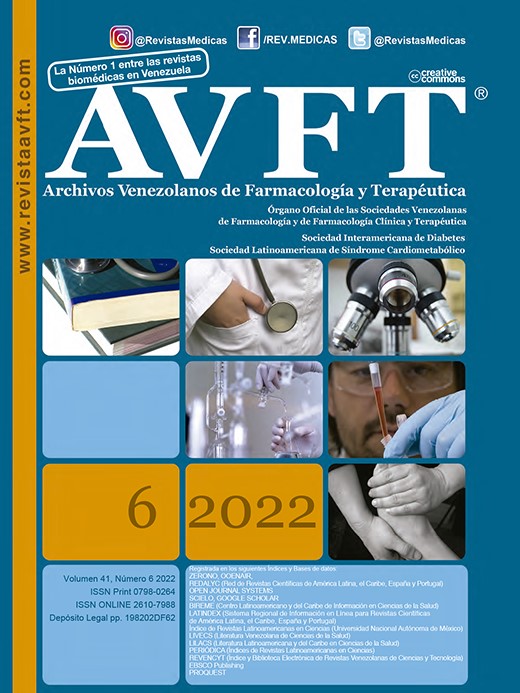Evaluation of body composition in a Colombian population attending a private practice in the city of Barranquilla, Atlántico
Keywords:
Body composition, bioimpedance, overweight, obesity, BMI.Abstract
Introduction: It is important to recognise body composition as a factor beyond weight, determined by fat, fat-free, mineral, visceral mass, total body water, habits, diet, basal metabolism (genetic component), etc. Individual differences in body composition, body fat distribution, and adipose tissue functions are predictors of the development of vascular and metabolic diseases, independent of sex.
Objective: To evaluate body composition in a Colombian population attending a private practice in the city of Barranquilla, Atlántico.
Materials and methods: Descriptive, retrospective, cross-sectional study using data from 345 patients between 18 and 60 years of age, collected from medical records, as a result of medical-nutritional consultations at the BiomediKcal-Advanced Medical Nutrition and Lifestyle Center in Barranquilla, all found with the "Tanita MC-780MA" bioimpedance medical equipment.
Results: Significant differences in w.kg, BMI, age, height and FFM.kg were found in the population assessed: The mean w.kg (p=0.01) in men was 60.3 kg, the mean w.kg in women was 59.2 kg. Mean BMI (p=0.001) men was 24.5, mean BMI women was 23.8 with a SD of 3.2. The mean age (p=0.001) in men was 39.8 years, in women the mean age was 32.2 years. Mean height (p=0.001) in men 172.4 cm, mean height in women 160.2. The mean FFM.kg (p=0,001) was 40,1 kg in men, in women 39,5 kg. No significant differences were found in the variables %FM (p=0,44) mean 33% in men, mean in women 32,8% and FM.KG (p=0,09) mean in men 20,2 kg and mean in women 19,7 kg.
Conclusions: The population evaluated when stratified by gender presented significant differences in multiple variables, based on which strategies can be designed to strengthen the physical health and healthy habits promotion programmes aimed at the Barranquilla community.
Downloads
References
OMS. Obesidad y sobrepeso. Notas descriptivas. Disponible en: https://www.who.int/es/news-room/fact-sheets/detail/obesity-and-overweight Acceso el 18.07.2022
Hernández Rodríguez J, Domínguez Y, Moncada Espinal O. 2019. Prevalencia y tendencia actual del sobrepeso y la obesidad en personas adultas en el mundo. Rev cubana Endocrinol; 30(3):193-210.
Popkin BM, Reardon T. 2018. La obesidad y la transformación del sistema alimentario en América Latina. Obes Rev; 19(8):1028-1064.
Correa-Rodríguez M, González-Ruíz K, Rincón-Pabón D, et al. 2020. La obesidad de peso normal se asocia con un mayor riesgo cardiometabólico en adultos jóvenes. Nutrientes; 12(4):1106.
Kuzmar I, Cortés Castell E, Rizo-Baeza M. (2014) Asistencia y respuesta al tratamiento por sobrepeso y obesidad en una población de Barranquilla (Colombia). Nutrición Clínica y Dietética Hospitalaria; 34(3):20-28.
Kasper D, Fauci A, Stephen H, Longo D, Jameson JL, Loscalzo J. (2016) Harrison. Principios de Medicina Interna 20 ed. Madrid: McGraw Hill. 2016; VOL 2:2837-2843.
Guilherme A, Virbasius J, Puri V, Czech M. (2008) Adipocyte dysfunctions linking obesity to insulin resistance and type 2 diabetes. Nat Rev Mol Cell Biol; 9(5):367–377.
Martínez CM, Barceló AM, Gómez GR. (2015) Circunferencia de la cintura, tamaño de la grasa visceral y trastornos metabólicos en la obesidad mórbida. RCAN; 25(1):28-47.
Lavie CJ, McAuley PA, Church TS, Milani RV, Blair SN. (2014) Obesity and cardiovascular diseases: implications regarding fitness, fatness, and severity in the obesity paradox. Journal of the American college of cardiology; 63:1345-54.
Chiquete E, Tolosa P. (2013) Conceptos tradicionales y emergentes sobre el balance energético. Revista de Endocrinología y Nutrición; 21(2):59-68.
Haidar YM, Cosman BC. (2011) Obesity epidemiology. Clin Colon Rectal Surg; 24:205-10.
Imes CC, Burke LE. (2014) The obesity epidemic: The United States as a cautionary tale for the rest of the world. Curr Epidemiol Rep; 1:82-8.
Ogden CL, Carroll MD, Kit BK, Flegal KM. (2012) Prevalence of obesity in the United States, 2009 – 2010. NCHS Data Brief; 82:1-8.
Mokdad AH, Serdula MK, Dietz WH, Bowman BA, Marks JS, Koplan JP. (1999) The spread of the obesity epidemic in the United States, 1991 – 1998. JAMA 282(16):1519-22.
Peña M, Bacallao J. (2001) La obesidad y sus tendencias en la región. Rev Panam Salud Pública 10(2):45-78.
Popkin BM, Adair LS, Ng SW. (2012) Global nutrition transition and the pandemic of obesity in developing countries. Nutrition Rev 70(1):3-21.
Gutiérrez Fisac JL, Regidor E, López García E, Banegas Fisca JR, Rodríguez Artalejo F. (2003) The obesity epidemic and related factors: The case of Spain. Cadernos Saúde Pública; 19(S1):101-110.
Shaw JE, Sicree RA, Zimmet PZ. (2010) Global estimates of the prevalence of diabetes for 2010 and 2030. Diabetes Res Clin Pract; 87(1):4-14.
Jiménez Acosta S, Rodríguez Suárez A, Díaz Sánchez ME. (2013) La obesidad en Cuba: Una mirada a su evolución en diferentes grupos poblacionales. RCAN Rev cubana Aliment Nutr; 23(2):297-308.
Bays HE. (2011) Adiposopathy. Is “sick fat” a cardiovascular disease? J Am Coll Cardiol; 57:2461-73.
Koliaki C, Liatis S, Kokkinos A. (2019) Obesity and cardiovascular disease: revisiting an old relationship. Metabolism. Mar, 98-107. doi: 10.1016/j.metabol.2018.10.011. Epub 2018 Nov 3. PMID: 30399375.
Piché ME, Poirier P, Lemieux I, Després JP (2018). Overview of Epidemiology and Contribution of Obesity and Body Fat Distribution to Cardiovascular Disease: An Update. Prog Cardiovasc Dis; 103-113.
Ortíz, Rina et al. Comportamiento epidemiológico de la obesidad y factores de riesgo asociados en la población rural de Cumbe, Ecuador. AVFT-Archivos Venezolanos de Farmacología y Terapéutica, 2017; 36(3):88-96
Bermúdez, Valmore et al. The Maracaibo city metabolic syndrome prevalence study: primary results and agreement level of 3 diagnostic criteria. Revista Latinoamericana de Hipertensión, 2014; 9(4): 93-107
Downloads
Published
How to Cite
Issue
Section
License
Copyright (c) 2023 AVFT – Archivos Venezolanos de Farmacología y Terapéutica

This work is licensed under a Creative Commons Attribution-NonCommercial-NoDerivatives 4.0 International License.




